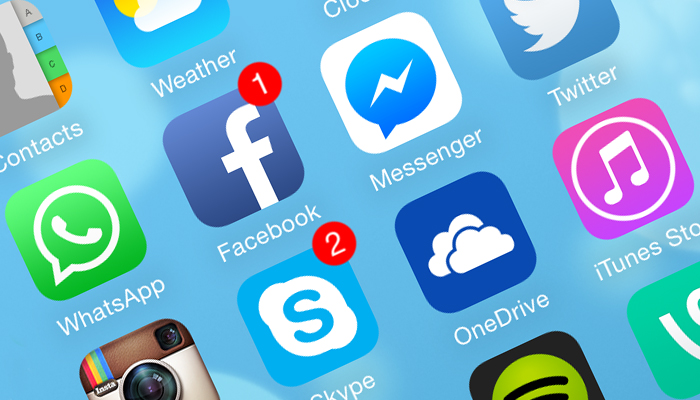· 9 min read
Why now’s the time to get to know your players

Keith Andrew
Video Games Journalist for Pocket Gamer, GamesIndustry.biz, Develop, VG247, GamesTM, and many others.
Marketing is a dirty word within the walls of many independent developers. Even for those who acknowledge it’s something they should be doing, it’s still often a task tackled right at the last minute – a reluctant last tick on a checklist. As with any job handled in a half hearted manner, however, it often doesn’t deliver the results developers are expecting. Or, indeed, any results at all.
Much of this is down to the fact that, even amongst industry veterans, marketing is a misunderstood art. So often deduced to be little more than “promotion” (even by some who actually work in the field), marketing is actually something successful firms working in any field being to take on before their product even exists. What sticks in the mind for me is a lecture I was party to when studying at University by one of our Advertising lecturers, detailing to us the virtues of British vacuum cleaner giant Dyson.
Sucking up
The company, we were told, wasn’t built around the premise of wishing to take on Hoover and Electrolux at their own game, but rather the idea that consumers weren’t happy with existing vacuums: People wanted a machine that would suck up all the dirt, all the dust, all the hairs from their home in a more effective fashion than was already on the market.
No consumer specifically asked for a bagless, cyclone-based vacuum, but company founder James Dyson discovered that such a device would best meet their ‘need’. Study any Dyson promotional material and you’ll see that this focus on providing a more efficient way to clean is carried right the way through to the company’s advertising – an honest message that taps into the very reason Dyson exists. This, in a nutshell, is your marketing 101. Whatever drives you to create a product in the first place must run throughout an organisation, right through to how you communicate its virtues to the buying public.

This is most definitely a harder undertaking when it comes to games. Most indie games start life as an idea in the head of only a few people, or maybe even just one, typically designed to cater for a want or need they have: “I’d really like to play a game with x, y and z in it,” they say, “so why don’t I make one?” Few are the developers able to take themselves out of the equation, making a game that caters for a gap gamers at large want filling, rather than simply creating a game they want to play, and that’s not hard to understand – if you’re facing the prospect of working on a game for months, maybe even years, you’re going to want to be passionate about it.
There is of course a crossover: There are notable examples of games made by developers simply making a game they want to play turning out to be especially good and automatically find an audience, but – in terms of every release that rolls onto the app stores – these cases are especially rare. All too often developers make a game for themselves and scratch their heads when downloads stutter and stall. For these developers, however, there’s now a saving grace. Never before in the history of games development has it been easier for developers to get to grips with just what their players want.
This is obviously an area we have a vested interest in. Analytics have become an essential way for developers to get to grips with what their players do and do not engage with in play and, via the ability to constantly update their games over the air, shape and re-shape their titles to meet the needs of the consumers they already have and, hopefully, the consumers they’re looking to capture. Not every game can be saved in this way (and, indeed, it requires developers being scarily honest with themselves, changing features they might be personally attached to), but there’s a reason that most of the games at the top of the app charts tend to be those that update the most frequently – they’re listening to their players.
Game on
Listening is exactly what Genera Mobile did with its iOS release Ramboat, as Data Analyst Sara Bayley explains. “Our analysis has been focused on user progression, especially in the early stages of the game,” Bayley tells us. “Through the use of GamesAnalytics custom events, we noticed that there was a high user drop-off once players got to level three.
“In our monetisation analysis, we detected that users generally had to replay an average of 18 times in order to collect enough coins to complete one of the missions associated with level three. We reduced the price of the item required to complete the mission, and the percentage of users lost at this level dropped.”
Bayley notes that the same progression analysis highlights that many users were “skipping missions that required users to collect fish during gameplay.” She continues, “Because of this analysis, we corrected a mission that incorrectly had the fishing option disabled and also changed the limits of other fishing missions to reduce user drop-off.”
Though these changes are relatively simple, the impact they can have on user engagement can be notable and, it stands to reason that, the more your existing players enjoy your game and feel like their concerns are being addressed, the more likely they are to spread the word amongst friends.
“We are currently working on a new game tutorial because our analysis seems to indicate that some users don’t understand all aspects of gameplay, from game controls to weapon upgrading,” Bayley concludes. “We will then continue to look at our custom events to study whether the new tutorial clears up our users’ misunderstandings.”
They’re not the only ones, either. We have more than 16,000 games currently plugged into our system, providing the kind of data that helps frame and retool a game to appeal to a wider audience. In all, GameAnalytics tracks more than 4,000 events every second across said library – that’s equal to 125 billion events every month. It’s a lot of data, but when analysed properly, it can highlights the rights and the wrongs of your proposition post release. It stands to reason that knowing what your gamers want could and should inform your game design for the better.
Socially speaking
And this has never been so important. While it’s a good thing that it’s easier to survey the wants and needs of gamers than ever before, the breaking down of barriers between the developer and the consumer has thrown up its own problems. The rise of #Gamergate – broadly the concern that there’s an all too cosy relationship between developers, games PR and the media which exploded onto social media last summer – only exists because the internet and the social media that taps into it gives consumers a voice, whether the issues they express are valid or not. It’s prime evidence of the massive impact gamers can have on the fortunes of everyone who works within this industry.
This can work both for and against games developers. On the one hand, a game’s biggest fans can be a powerful promotional tool, pushing the virtues of your game far and wide voluntarily, free from any direct association (and perceived corruption) with the developer and roping in scores more gamers in the process. On the other hand, its also means that you ignore your users at your peril. As any community manager will tell you, any grievance a gamer has with your game can quickly mushroom into a far bigger issue thanks to the ability of consumers to propagate their objections to hundreds or thousands of people in just a matter of seconds.

It all means that the gamer not only control how well your game does at launch, but also the peaks and troughs it encounters throughout its lifecycle. The arrival of digital downloads means that games no longer have to make the majority of sales at launch – they can evolve and appeal to new audiences months and even years after their debut. The rise of analytics enables said evolution to take place. Most importantly, however, the social media revolution that has spread across the web post Facebook and Twitter means that gamers can control the conversation that surrounds your game from day one onwards – even people who have never even played your game can lead consumer opinion on it.
It all requires developers, big and small, to be open in a way that is alien to many; think about the consumer before you even start developing a game, put their reactions to it via analytics and social media front and centre throughout the game’s life and, most importantly of all, react accordingly or risk facing their wrath. In 2015, the games industry is a fluid beast and the developers that want to survive need to adapt or die.
Key takeaways:
- Marketing is not purely promotion: think about what gamer need you’re trying to meet before you even start developing your game
- Using analytics means you can see what your gamers do and do not like, enabling you to make changes to your game throughout its life
- Making effective changes to games post release can have a dramatic impact on the success of your game
- The consumer is king: heed any feedback you get from gamers as social media gives them the power to lift or destroy your game at will